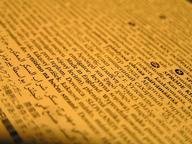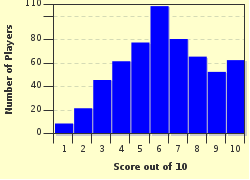Quiz Answer Key and Fun Facts
1. There are three consonants that are pronounced by using both lips, hence the name bilabial. Which of the following is NOT one of them?
2. To pronounce /f/ and /v/, the active articulator and passive articulator are the upper teeth and the lower lip respectively. These two consonants are described as labio-dental. On the contrary, the tongue tip and the upper teeth serve as the active articulator and the passive articulator when you pronounce the letter "th" in "think" and "father". What is the place of articulation for these two consonants?
3. Alveolar sounds are pronounced by using the alveolar ridge (the region behind the upper teeth) as its passive (stationary) articulator and the tongue tip as its active (moving) articulator. Which of the following is NOT one of the English alveolar consonants?
4. There are four post-alveolar consonants. If you pronounce the words "shy" and "seizure", you will notice that your tongue tip touches your alveolar ridge. Which are the two other consonants (as pronounced in the first syllables of the following words) that fit into this category?
5. As suggested by its name, the palatal consonants are pronounced by using the tongue body as its active articulator while the hard palate (the bony part on your mouth you can touch with your tongue) serves as the passive articulator. For example, the letter "y" in the word "yellow" is categorized as a palatal consonant. What is its phonetic symbol?
6. The letters "k" and "g" in the word "kangaroo" are categorized as velar consonants. The active articulator is the tongue body. What is the passive articulator?
7. The consonant sounds of /h/ and /w/ are produced in the larynx. What is the name given to these types of consonant sounds?
8. Consonant sounds can also be classified according to their manner of articulation. Airflow escape along the sides of the tongue when a lateral consonant is pronounced. Which of the following is a lateral consonant?
9. Consonants are classified according to their states of glottis, too. In other words, consonants can be described as either voiced or voiceless. Which of the following is the odd one out?
10. Which of the following is a voiced consonant?
Source: Author
Matthew_07
This quiz was reviewed by FunTrivia editor
agony before going online.
Any errors found in FunTrivia content are routinely corrected through our feedback system.


